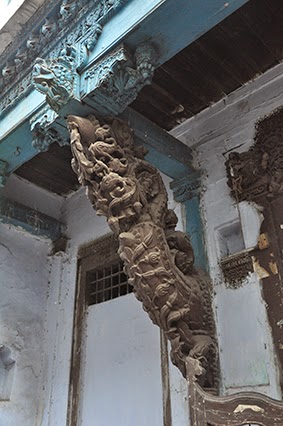Today was a day of wandering and exploring the city. Taking in the architecture, Looking for craft workshops and observing the way people live and work.
I had seen images of a small mosque, with wonderfully intricate carving, The Sidi Saiyyed Mosque. I went off t explore and try to find it.
The Mosque was built in the last year of the Sultanate of Gujarat shortly before the invasion of the Mughals. It was built by Sidi Saeed (Saiyyed) an Abyssinian in the service of Rumi Khan, The second son of Khuda Vand Khan Khwaja Safar Salmani, The governor of Surat during the tenth Gujurat Sultan Mahmud Shah III ( 1537-1553).

Sidi Saeed was apparently a learned man with a vast library, later in his life he joined the personal retinue of Bilal Jha Jhar Khan a famous general in the army of the last Sultan of Gujurat. Sidi Saeed died in 1576 and his tomb lies near the north wall of the mosque compound.
The mosque is famous for its intricate lattice work windows, known as Jali's, which depict intertwined plant, foliage and palm tree imagery, as well as squares of geometric patterns. like much of the architecture in the region the building combines the skills of Jain carvers with both Hindu and Islamic imagery.
When walking around the city your eye is continually drawn upward to take in the multilayers of the buildings which sit right up to the cramped roadways.
Your eye is drawn to the incredible detail of carving, much like the mosques, but this time in wood.
intricate details and panels cover the facades.
Ornate buttresses.
The detail of the buildings reflect the wealth and status of the merchants and owners who lived here when the buildings were constructed.

























